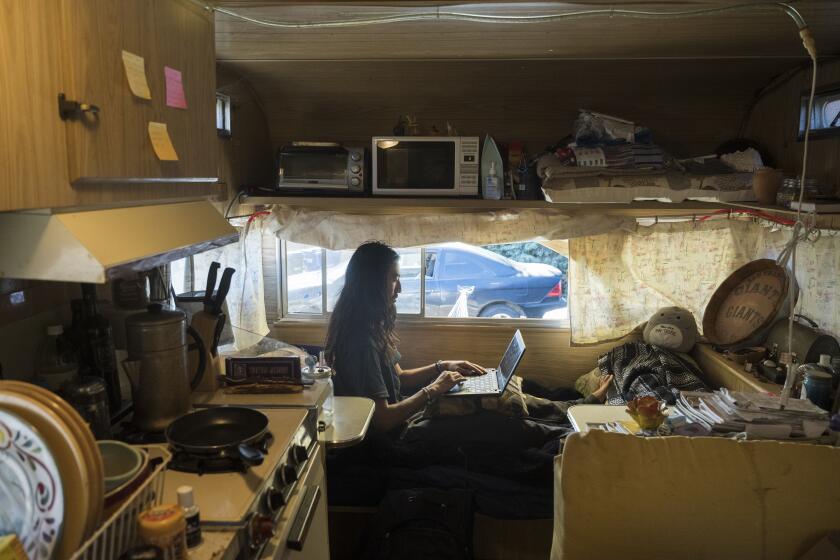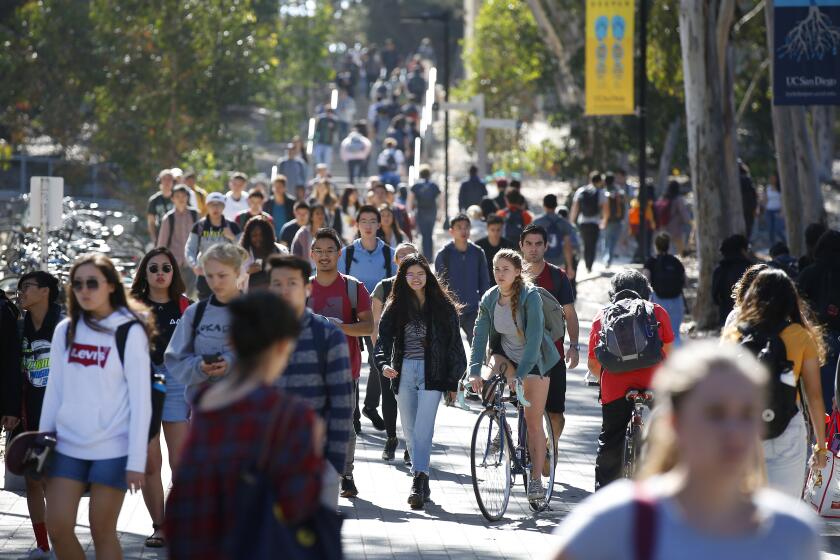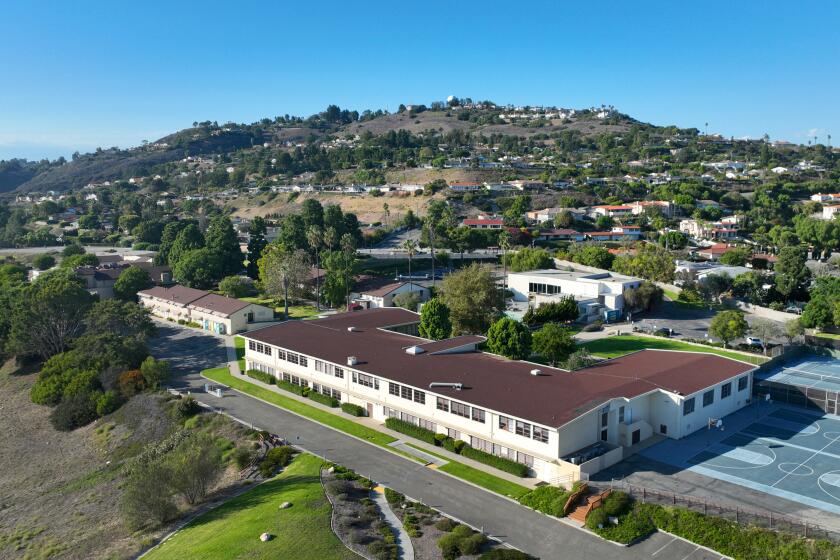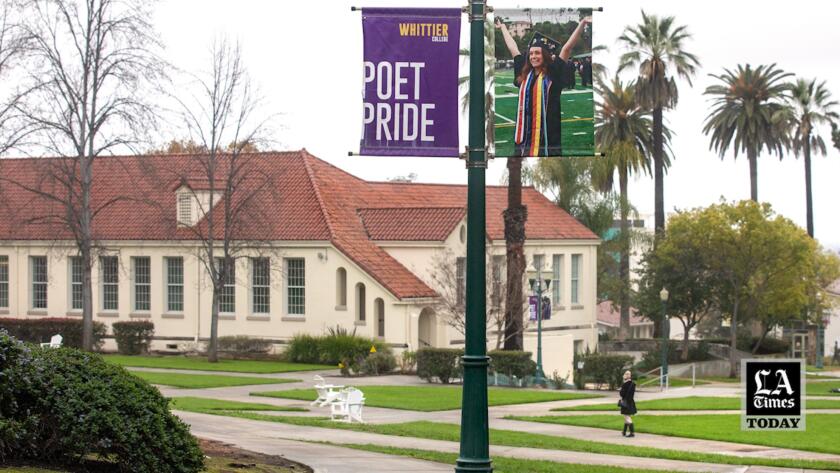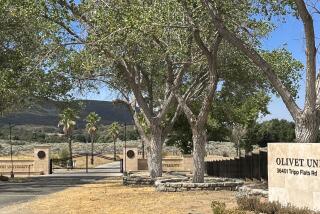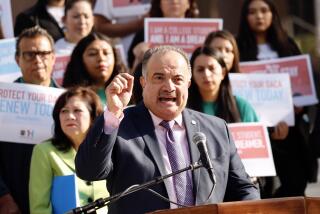Plunging enrollment, financial woes, trustee exodus. Whittier College confronts crisis
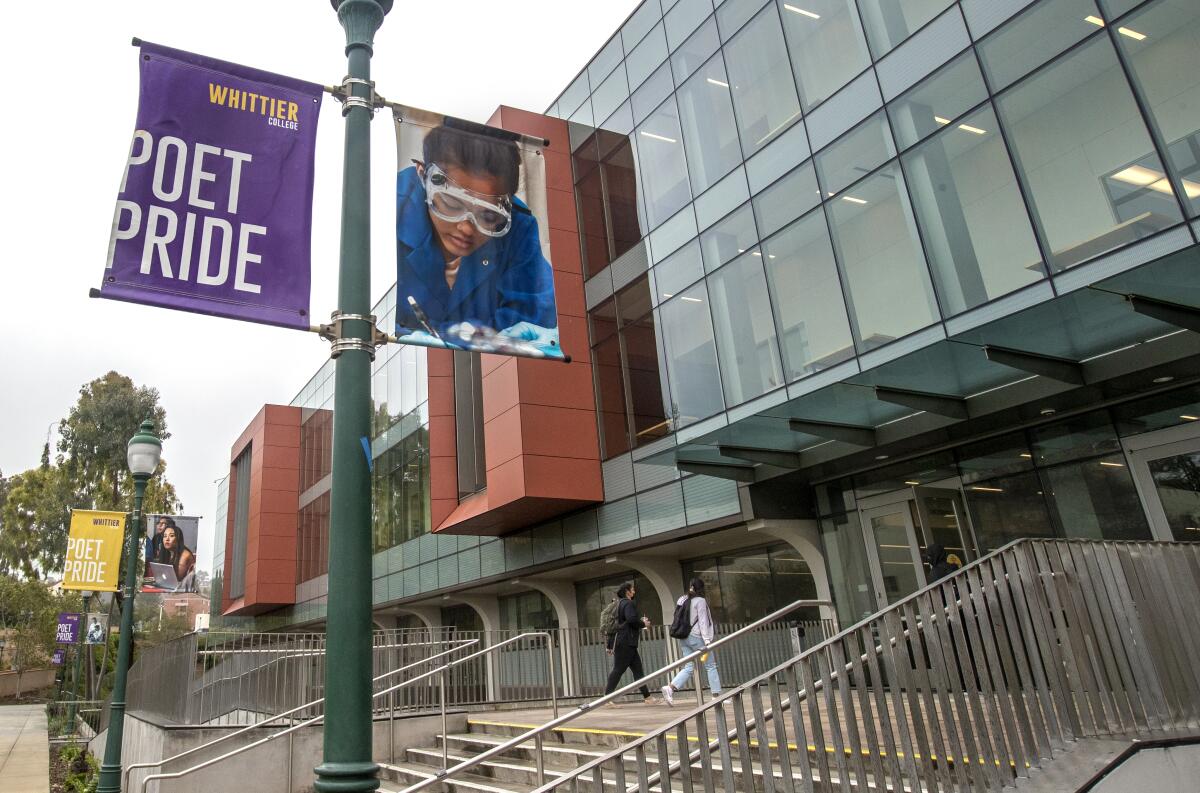
The grounds of Whittier College are lush and the buildings stately. But the once-bustling quad is often all but empty these days, students say, and inside the Wanberg Hall dormitory, carpets smell musty, the Wi-Fi is spotty, and 25 students share two restrooms with toilets that frequently break down and take ages to fix.
The eerie quiet outside and fetid bathrooms inside are signs of the turmoil roiling one of California’s oldest liberal arts colleges, President Nixon’s alma mater and a higher education institution rooted in its Quaker heritage of social justice and respect for diversity.
Since 2018, enrollment has plummeted by about 35%, from 1,853 students to about 1,200, according to college figures. Annual revenue has plunged by 29% over roughly the same period, audited financial statements show.
Partly to save money, Whittier cut football and three other sports programs last year, and the college has said it plans to sell the president’s residence, Wardman House, a hilltop mansion with views to the ocean.
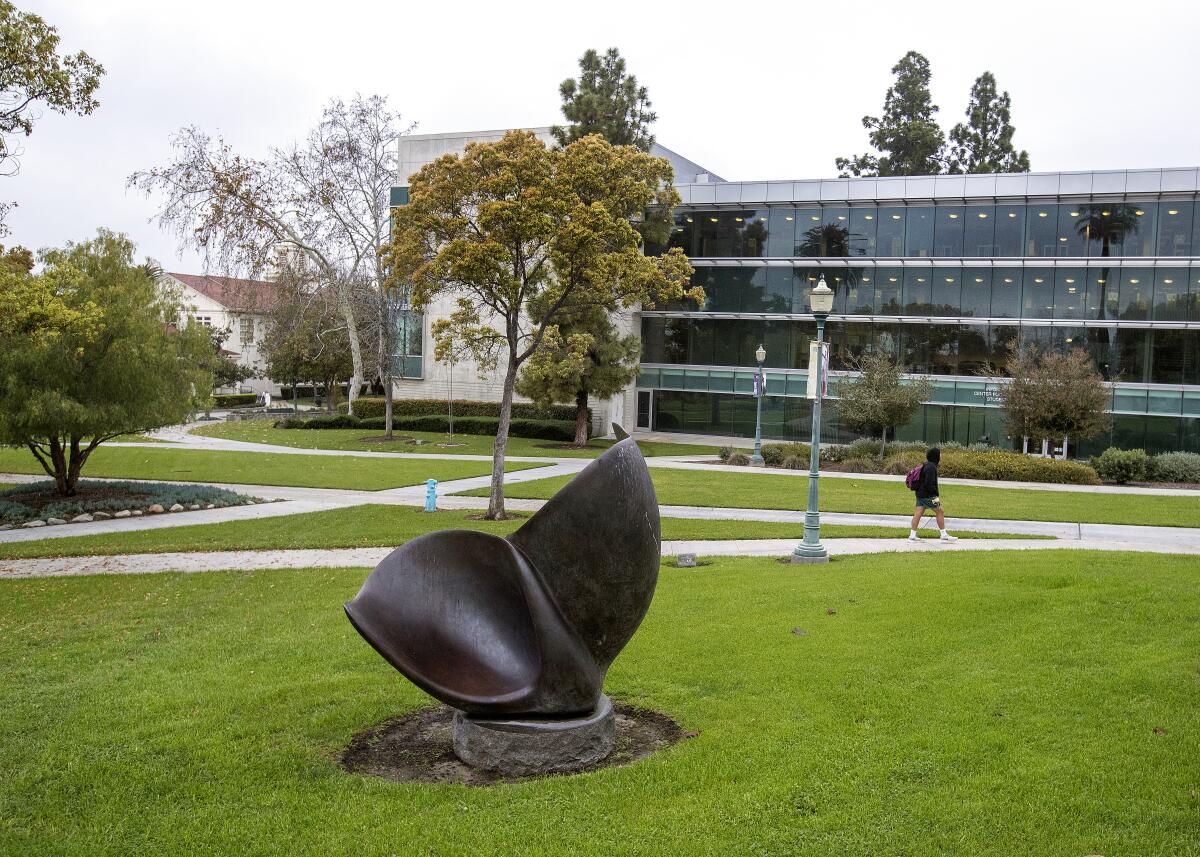
Many small liberal arts campuses across the country and in California are struggling under financial pressures and dwindling enrollment as the college-age population shrinks and tuition costs rise. The COVID-19 pandemic exacerbated their woes.
More than 850 colleges have closed since 2004, according to the education news source Hechinger Report. Last year, Marymount California University, a Roman Catholic liberal arts college in Rancho Palos Verdes, closed, and Mills College, a women’s school in Oakland, merged with Northeastern University to avoid closing altogether. Holy Names University in Oakland will close at the end of the spring semester, unable to recover from the double hit of pandemic challenges and the economic downturn.
But along with enrollment and financial troubles, Whittier is also confronting a crisis over its leadership and direction.
Linda Oubré, who took office in July 2018 as Whittier’s first Black president, has championed diversity and depicted Whittier as entrenched with pockets of racist attitudes. Her critics say the college has long supported diversity and the problem is mismanagement. At stake is the future viability of the 136-year-old college.
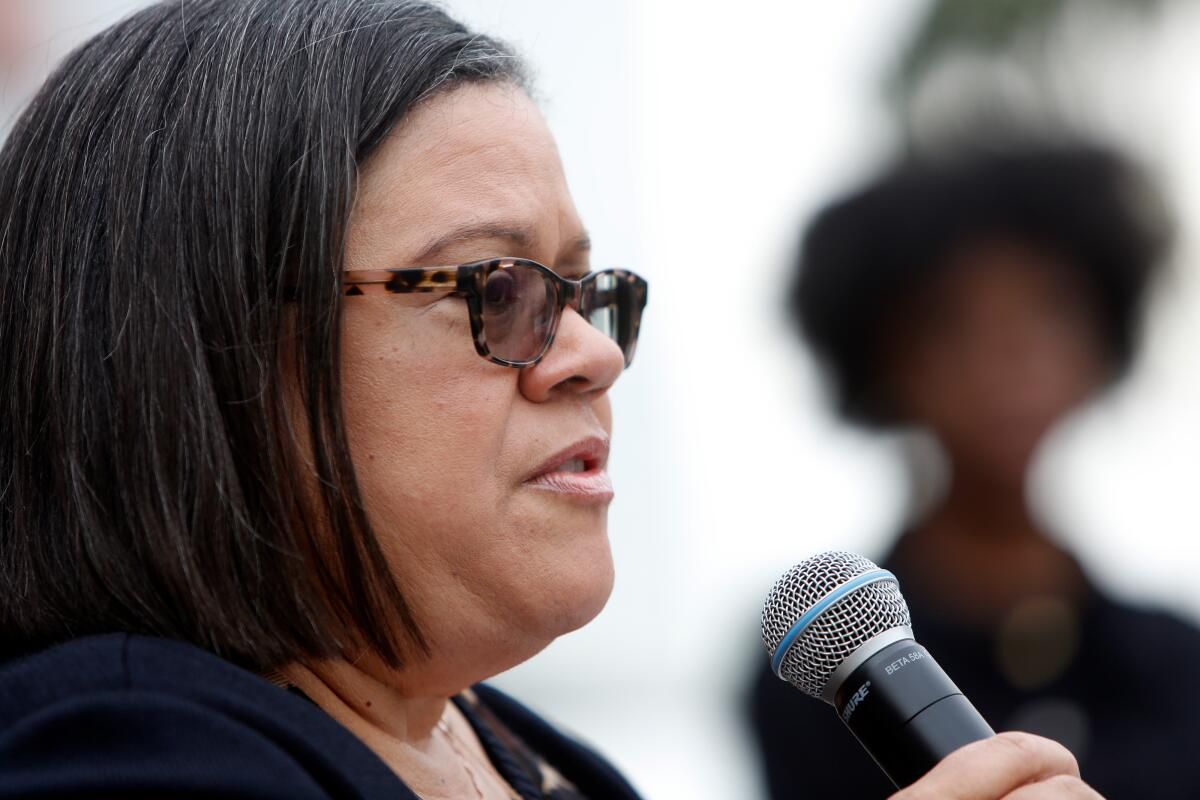
Whittier’s Board of Trustees faces upheaval. On March 14, Miguel Santana, who is an alum and serves as the president of the Weingart Foundation, announced he has resigned as chair after serving almost two years, though he will stay on the board. He did not state a reason beyond saying “now was the time to make way for new leadership.”
He had earlier declined several requests for comment about the college’s troubles.
Since late February, five of 25 board members have left. Three resigned, two of whom were first suspended and then quit, alleging that the board had tried to silence them for asking questions about enrollment and finances. Another two trustees left under circumstances that could not be determined.
Litigation blocking student housing projects, a potential delay in state funding and escalating construction costs are among the challenges.
Since Oubré took office, more than 20 trustees resigned during their term or chose not to stand for reelection, and the board is now seeking its fourth president.
The Whittier College chapter of the American Assn. of University Professors told the board last month that the college suffers from “mismanagement” and is in “turmoil.” An open letter signed by more than 300 alumni and other members of the Whittier community described an institution in “grave distress,” and college records show that the percentage of alumni who give to the university slumped from 25% in the 2017-18 fiscal year, before Oubré arrived, to 11% in 2020-21. Comments on some of Whittier’s Instagram posts are rife with criticism from students and alumni.
In 2021, the college hired Oubré’s son, Nate Oubré, as director of innovation and new ventures to help generate revenue. His LinkedIn profile shows no work experience in the field of education; his previous job was managing an initiative to “modernize and innovate” a janitorial services company.
Some alumni saw the hire as a potential conflict of interest, comments on Whittier’s social media allege favoritism, and the faculty took their concerns to Santana, then chair of the Board of Trustees. He responded with a letter defending the hire, telling the faculty that Linda Oubré recused herself from the hiring and does not directly supervise her son.
Oubré told The Times that the board determined before her son was hired that bringing him on did not violate policy. Nate Oubré did not respond to emails seeking comment.
The Times spoke with Linda Oubré for about 20 minutes and later sent her and Santana detailed questions. Oubré replied that her team would “work on official answers to your questions as many are inaccurate.” Ultimately, Kenya Williams, the board’s governance chair who was named interim board chair after Santana’s resignation, sent an official statement, but it did not address specifics.
“Whittier College is a strong institution in the middle of a challenging chapter,” and alumni, faculty and staff “have raised important questions about Whittier’s future direction,” the statement said. “We are confident and supportive of the approach being taken to secure Whittier’s future.”
Whittier president says college is healthy

When Whittier announced Oubré as its 15th president, it lauded her executive and entrepreneurial experience. She holds an MBA from Harvard Business School and served as dean of the College of Business at San Francisco State University.
In her corporate career, she led two consulting firms and was a founder and president of BriteSmile, a teeth-whitening spa business that she helped take public on Nasdaq. In the 1980s and 1990s, Oubré held managerial positions on the business side of the Los Angeles Times and its then-owner, Times Mirror Co.
Last month, in her annual address to the college, Oubré maintained that Whittier is “financially strong and not in danger of closing.”
Trustees unanimously passed a $4-million plan to increase online certification programs, which they believe will help raise the college’s revenue and make education accessible to more people. The college has substantially reduced its debt, and last year its endowment was valued at $126 million.
At the end of 2020, Whittier received the largest single grant in its history, $12 million from MacKenzie Scott, the philanthropist and former wife of Amazon founder Jeff Bezos, given to support the school’s work on equity and inclusion.
For a decade, more than half of Whittier’s undergraduates have been people of color. But in an hourlong talk at a South by Southwest education conference earlier this month, Oubré told attendees she encountered attitudes at Whittier such as, “‘We can’t have too many Hispanics,’ whatever, fill in the blank, ‘because the white kids won’t be comfortable.’”
Oubré moved to diversify leadership and faculty. She said that the college has hired two Black male PhDs, one of whom is on a tenure track, and that she promoted to her leadership team a transgender man, a Black woman and a Latina.
In her recent speech to the college, Oubré addressed criticism of her leadership: “One of the biggest responsibilities of leaders is being able to not only listen to the people who support you but to the critics. And I appreciate the critics as much as I appreciate the support, because it’s the criticism and the conflict that helps us improve.”
Plunging enrollment
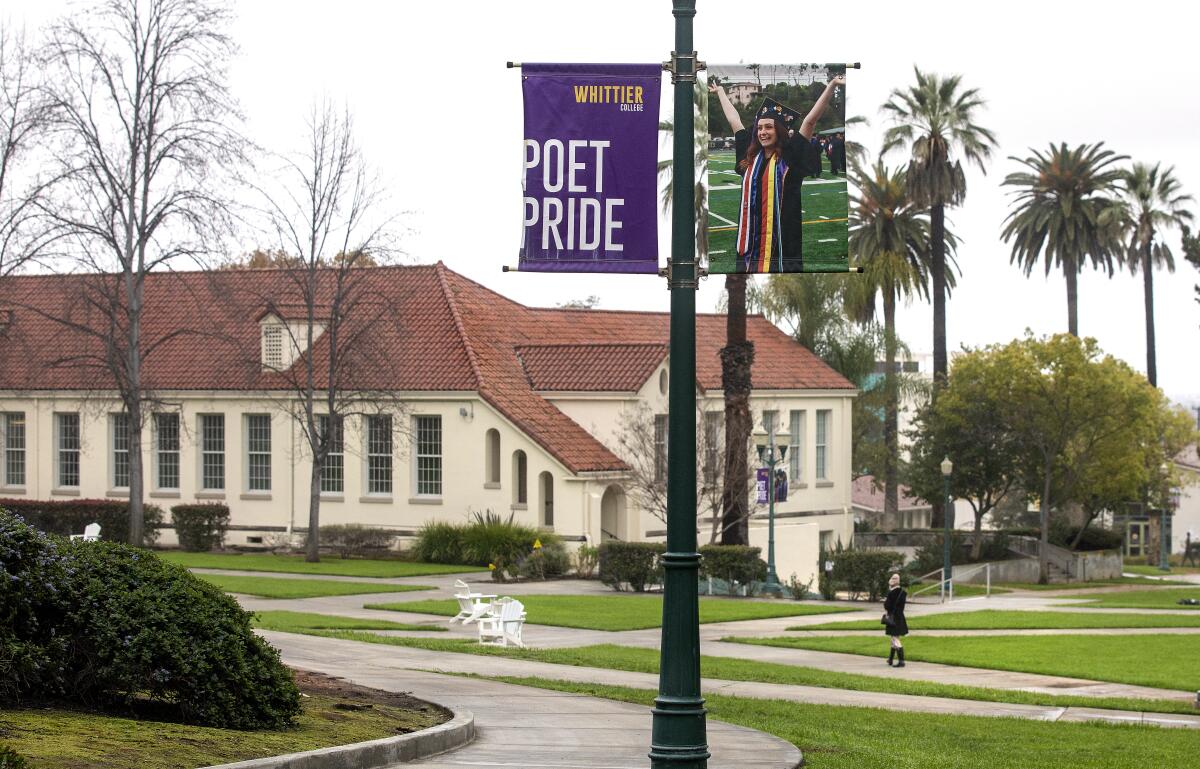
Tucked in the Puente Hills Preserve, about 12 miles southeast of Los Angeles, Whittier was founded by Quakers in 1887 and named after poet and abolitionist John Greenleaf Whittier. Nixon, who was student body president, graduated in 1934.
For the record:
10:22 a.m. March 30, 2023An earlier version of this story stated that in 1974 Whittier College purchased a law school located in Costa Mesa. At the time of the purchase the school was located in Hancock Park; it was later relocated to Costa Mesa.
The college became secular in the 1940s. In 1974, it purchased a law school in Hancock Park, which it ran until 2017, when Whittier shut it down after enrollment had dropped by more than two-thirds. Today, Whittier offers one graduate degree, a master’s degree in education.
From 2010, Whittier’s undergraduate enrollment held steady in the 1,600s, reaching a peak in 2019 with 1,776 students. Then enrollment plunged. This term, faculty report the number of undergraduates is just 1,027.
After two years of record growth, the University of California received a smaller number of applications for fall 2023, led by drops in students from other states and countries.
In a positive sign, Whittier says, the number of first-year students increased for the last two fall semesters, and in her state of the college address, Oubré said the school’s numbers “really align with a lot of the other institutions that we compete with.”
A Times analysis shows that although most of Whittier’s private college peers in Southern California experienced a drop in undergraduate enrollment since 2018, about half have rebounded above where they were then. Whittier has seen one of the steepest and most sustained falls.
Whittier’s financial challenges are driven by the enrollment nosedive, which translates to far fewer students paying its almost $49,000 annual tuition. For admission in fall 2021, Whittier received the lowest number of applicants since 2010, according to the school’s figures.
Threats, fear of retaliation
In her talk at South by Southwest, Oubré said she has “received death threats that are racialized.” She told The Times that she and others at Whittier, including board members, have received threats, and that those are under investigation by campus security working with local law enforcement.
A Whittier Police Department spokesperson told The Times on March 21 that it had no reports of threats made against Oubré, the university or the Board of Trustees.
UCLA, the nation’s most applied-to university, wants to add more students but doesn’t have room. So it’s buying the Marymount California University campus to hold 1,000 more.
Some former board members, alumni and others charge that Oubré’s administration has stifled dissent and instilled a culture of fear.
“People are afraid to voice their opinions, because it is a very toxic and punitive environment that they’re living in right now,” said Rachel Homel Rice, who was president of Whittier’s Alumni Assn. from 2004 to 2008. In its letter to the board, the Whittier College chapter of the American Assn. of University Professors said many faculty members didn’t sign because they “fear personal or programmatic retaliation.”
Oubré told The Times she holds “open office hours for students and faculty and staff,” and in her annual address said she wanted to “hear everyone’s critiques.”
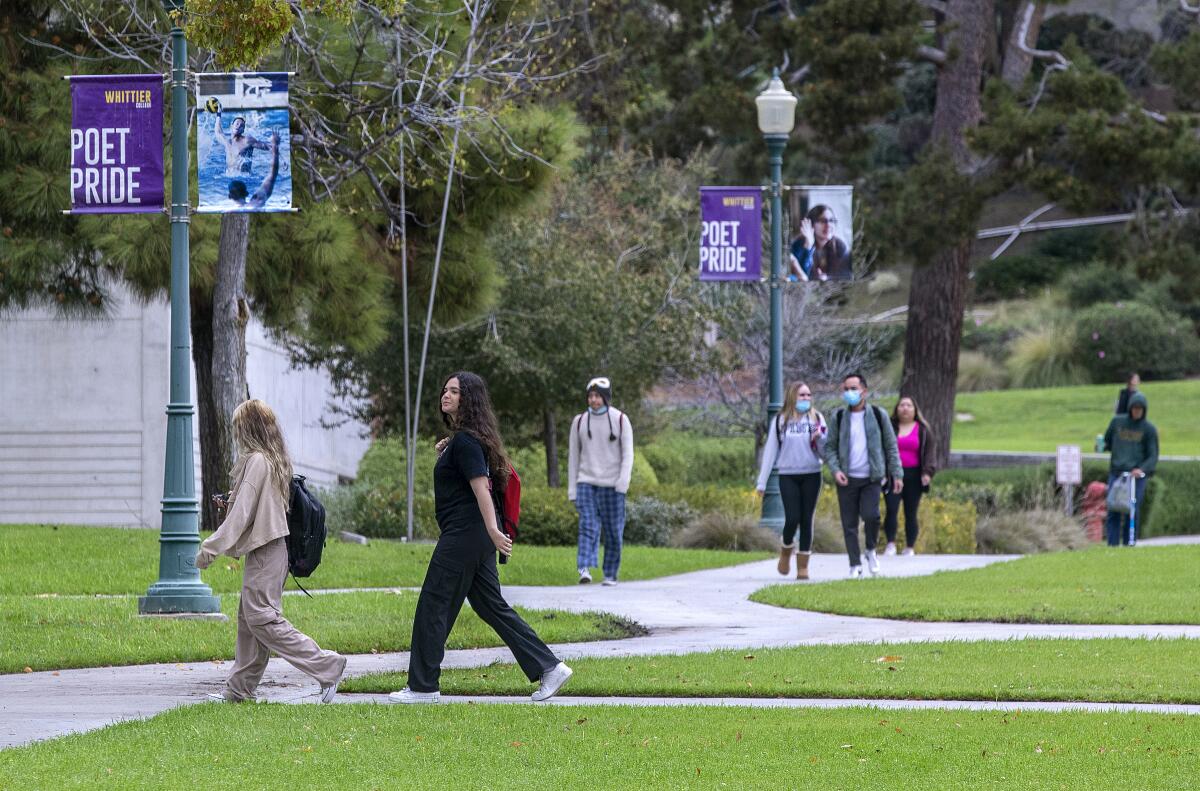
Alumni and others have formed a group called Save Whittier College, which has criticized Oubré’s leadership.
Lawyers for Whittier and the Board of Trustees have sent two cease-and-desist letters to a prominent member of the group, Elizabeth Power Robison, who was Whittier’s vice president of advancement from 2007 to 2015 and has been a donor to the school.
The first letter demanded that Robison stop all communication with Oubré, and the second demanded that she “cease making statements or engaging in other conduct that undermines President Oubré’s reputation, authority and position.”
Robison has refused to comply, calling the letters part of a “pattern of intimidation.”
Faculty and students hit hard
Faculty salaries at Whittier have fallen behind local peer institutions, according to a spring 2022 report issued by a faculty committee. The school had also stopped paying contributions to faculty retirement plans, though recently Oubré announced a “phased reinstatement” scheduled to begin April 1.
Whittier’s figures show that the number of full- and part-time faculty dropped by almost 15% from 2018 to 2021.
“Many faculty have expressed concerns about if the college will be here in five years,” said Anne Sebanc, president of Whittier’s American Assn. of University Professors chapter.
Students stand to lose the most. Alessandro De La Torre is a junior studying computer science. “The faculty is amazing,” he said, echoing many others. “They care about students a lot.”
The college has long prided itself not only on its faculty but also on providing a vibrant residential community. Yet for more than an hour on a recent Monday morning, hardly any students could be seen walking around the campus, a vacancy De La Torre attributes to the decline in enrollment.
“At other college campuses, you see students hanging out in the central parts of the campus,” he said. But at Whittier, “there’s barely anyone here.”
This article was reported and edited in conjunction with the investigative journalism program at USC. The reporters may be contacted at [email protected] and [email protected]
Watch L.A. Times Today at 7 p.m. on Spectrum News 1 on Channel 1 or live stream on the Spectrum News App. Palos Verdes Peninsula and Orange County viewers can watch on Cox Systems on channel 99.
More to Read
Sign up for Essential California
The most important California stories and recommendations in your inbox every morning.
You may occasionally receive promotional content from the Los Angeles Times.
